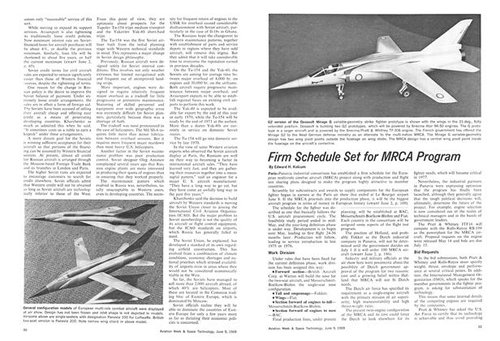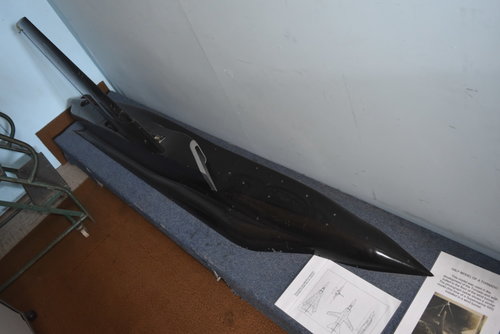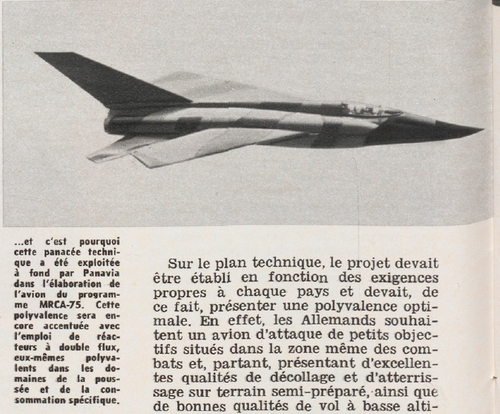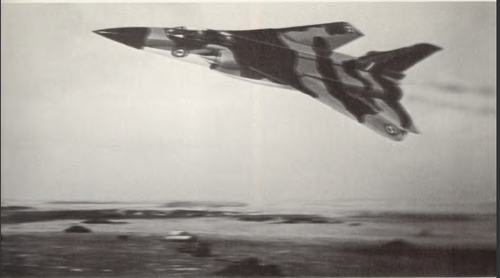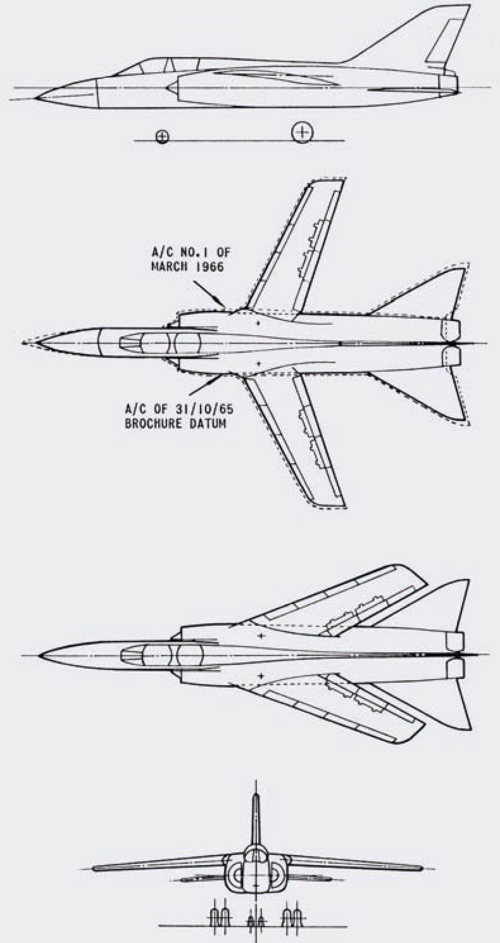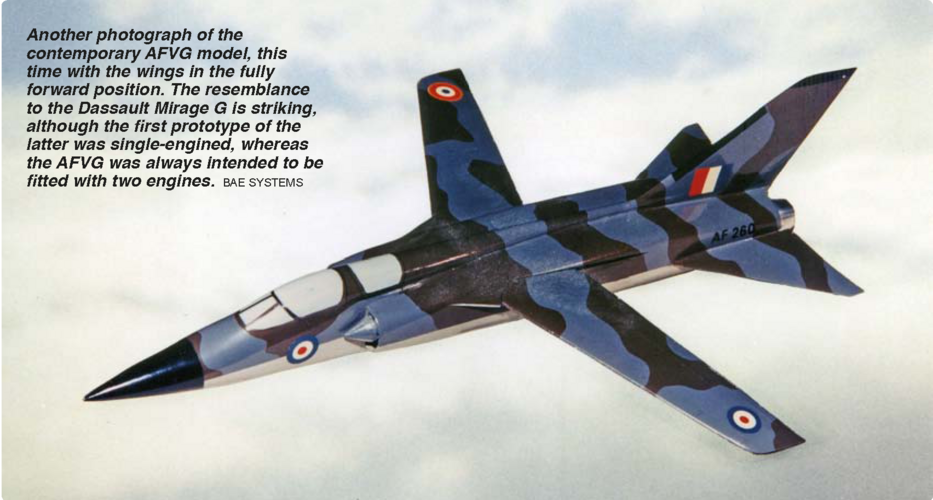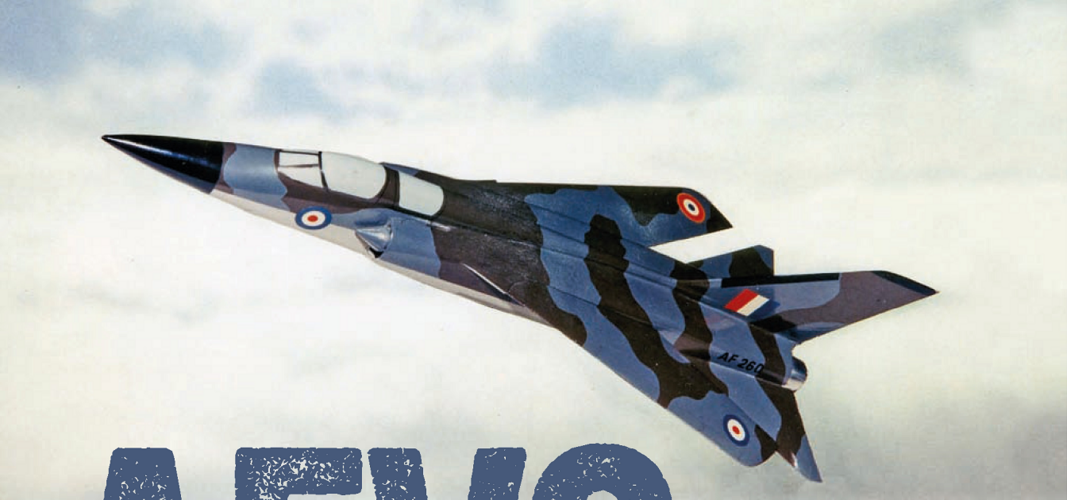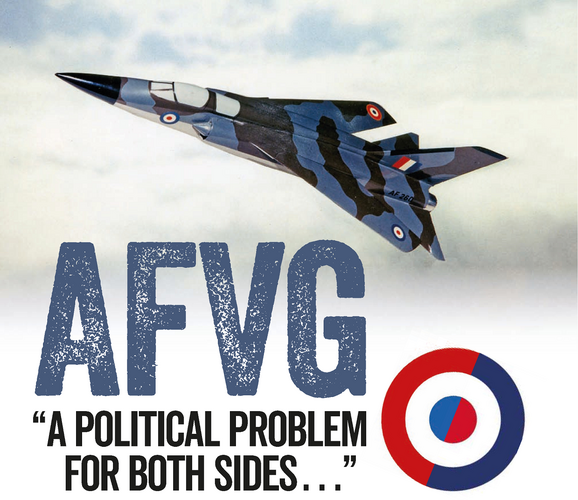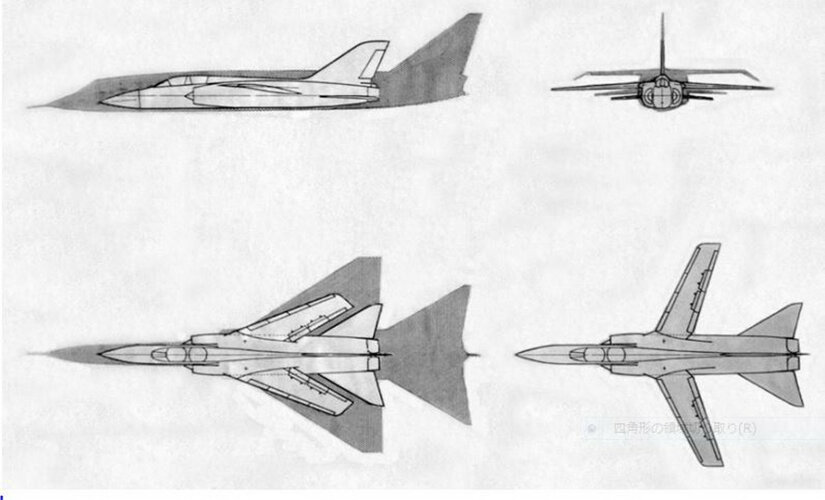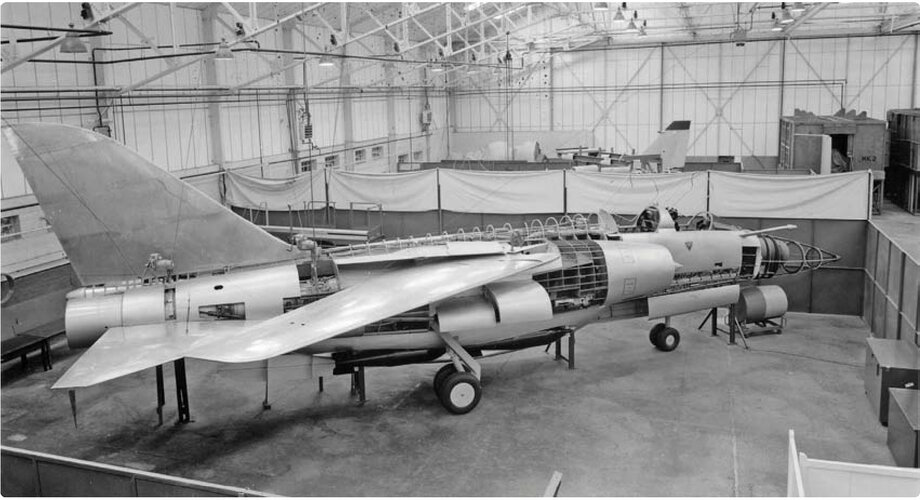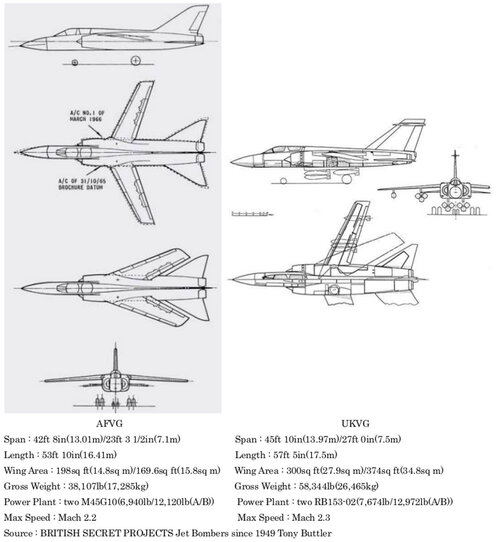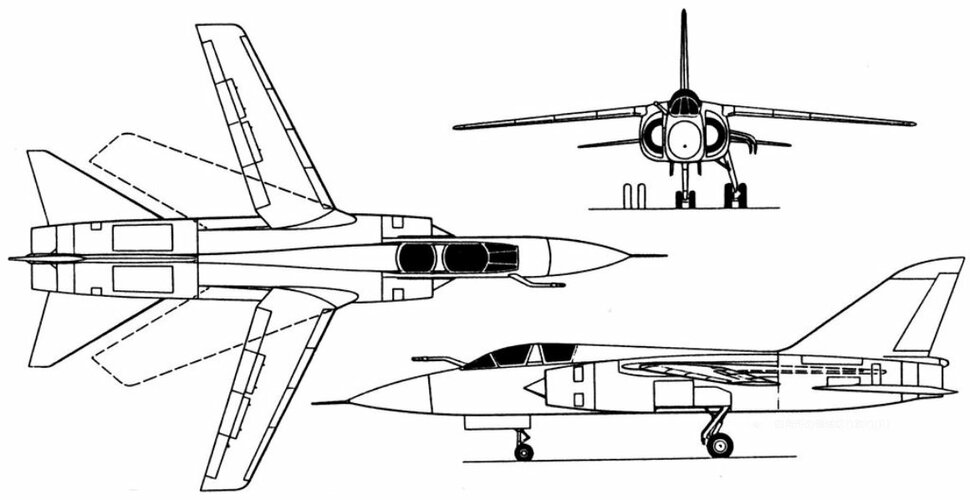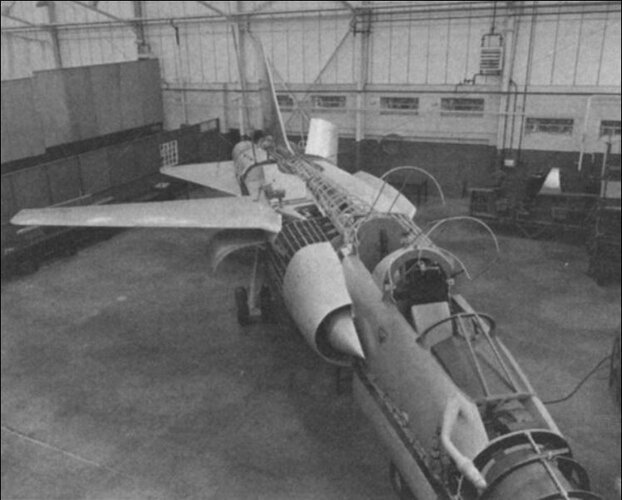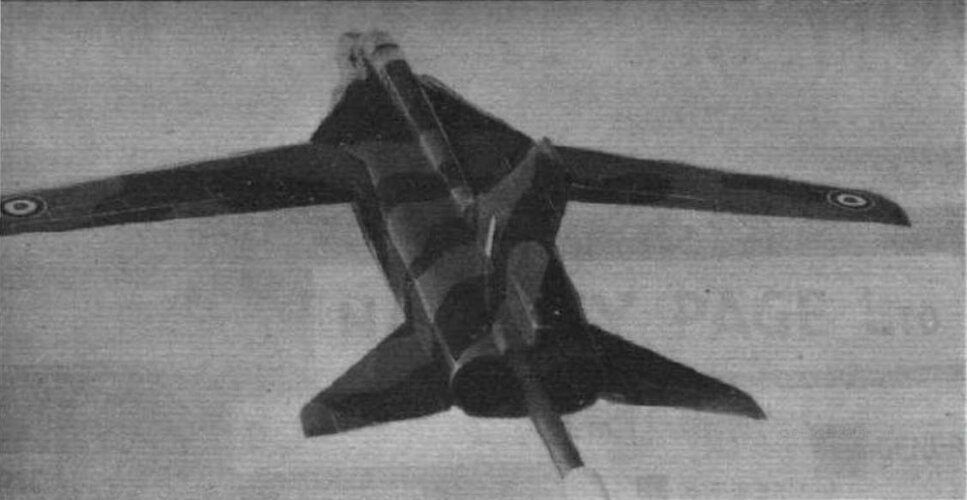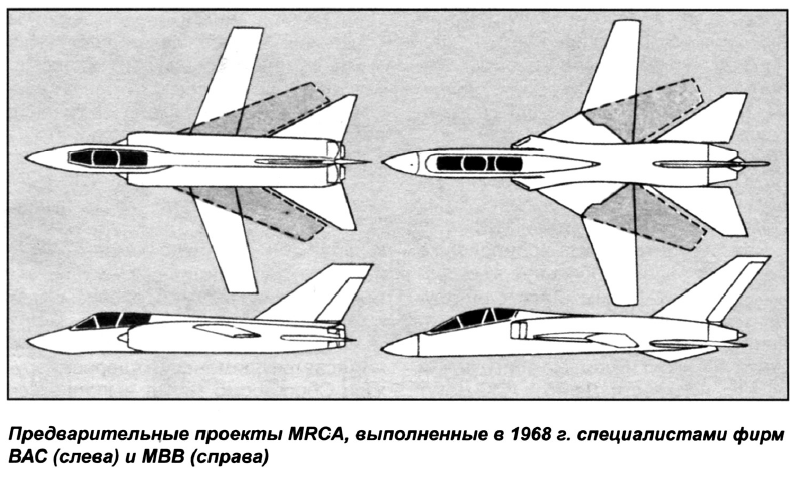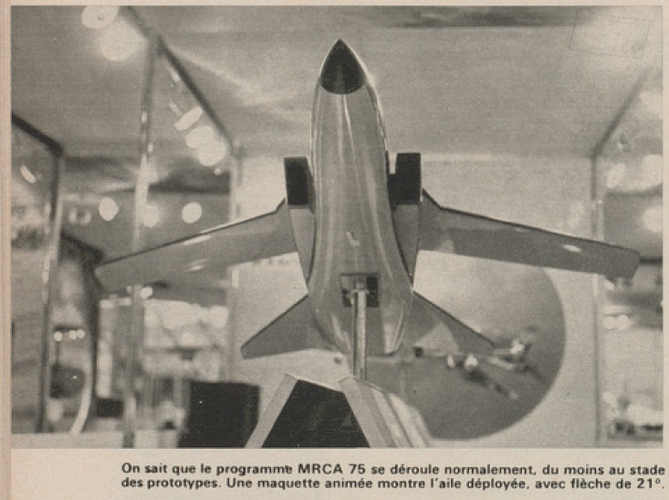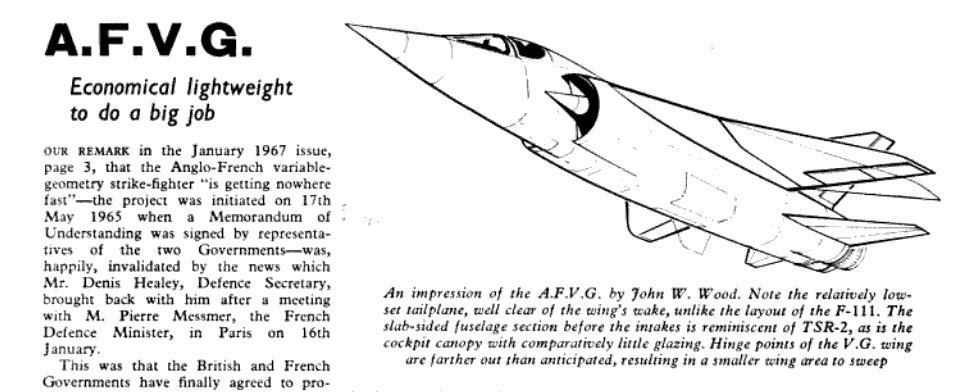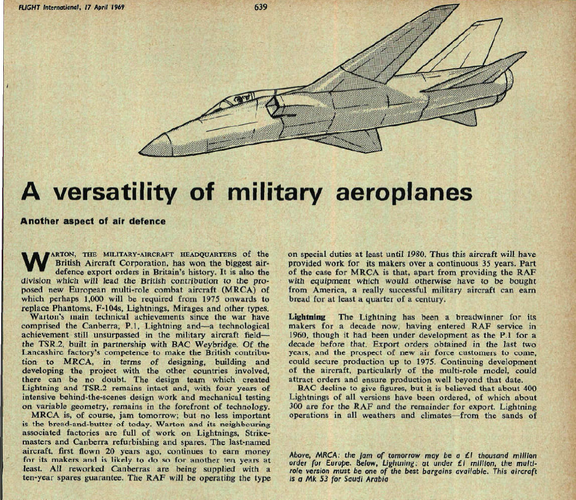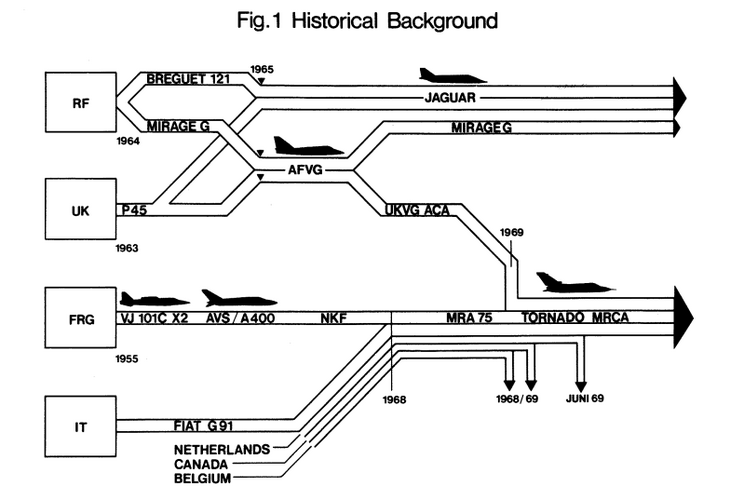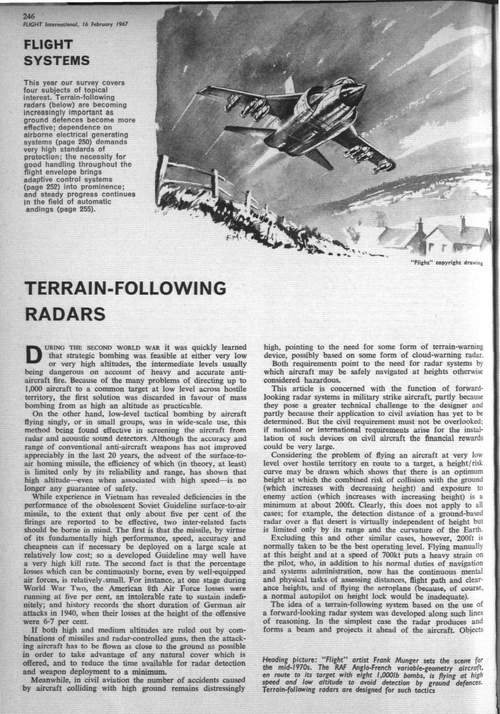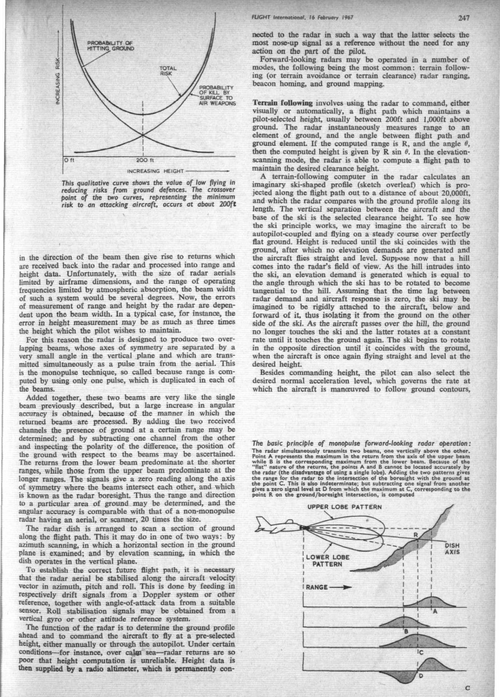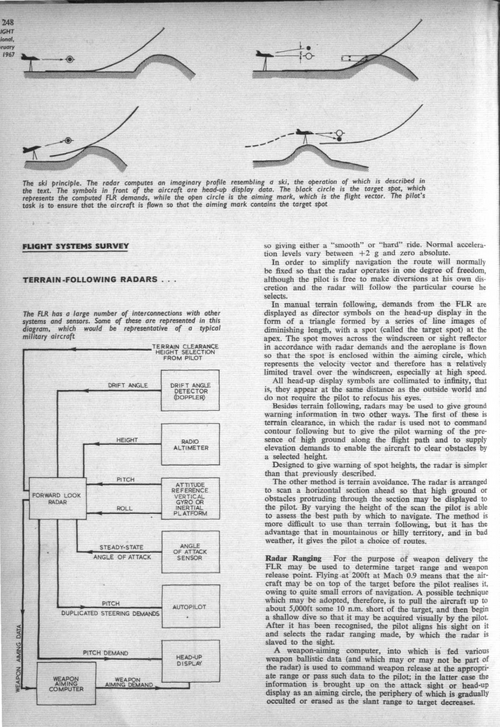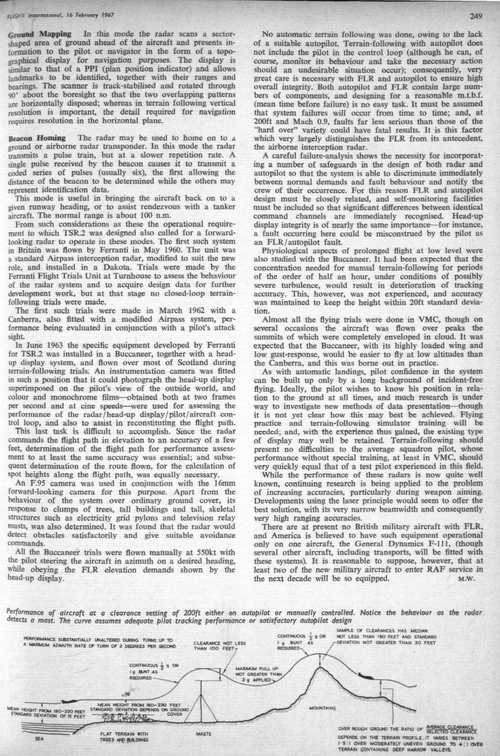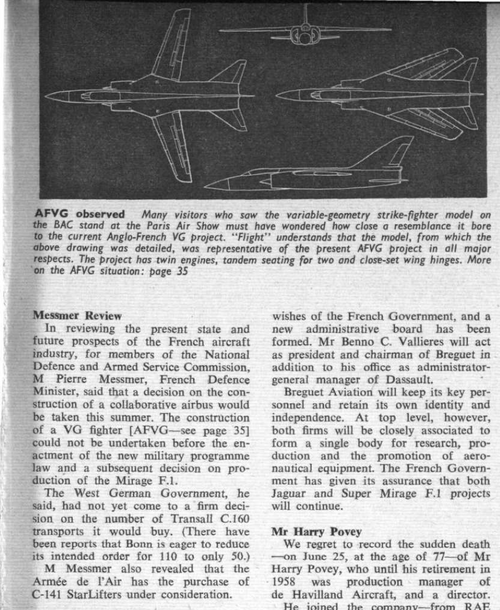You are using an out of date browser. It may not display this or other websites correctly.
You should upgrade or use an alternative browser.
You should upgrade or use an alternative browser.
Studies before the Tornado: NKF, AFVG, UKVG
- Thread starter overscan (PaulMM)
- Start date
nuuumannn
Cannae be ar*ed changing my personal text
- Joined
- 21 October 2011
- Messages
- 276
- Reaction score
- 544
Yankee_Aviator
ACCESS: Restricted
- Joined
- 12 May 2021
- Messages
- 49
- Reaction score
- 75
I just want to know why the British insisted on multinational collaboration rather than pursuing the UKVG as a purely indigenous British aircraft. I've heard from some places that the British government had mandated that they would only procure multinational planes in the future, but I have not been able to verify this. If it's true I would like to know what their reasoning was. I've always been all about country of origin of aircraft, I just don't see the merits of multinational aircraft. Different requirements between different countries and political disagreements lead to delays and cost overruns which negate any advantage in shared development costs, plus it takes away from the national pride that developing an advanced military aircraft brings. Morale is important. Last part is just my two cents, if anyone has any info on the British government requiring multinational collaboration, please share.
I just want to know why the British insisted on multinational collaboration rather than pursuing the UKVG as a purely indigenous British aircraft. I've heard from some places that the British government had mandated that they would only procure multinational planes in the future, but I have not been able to verify this. If it's true I would like to know what their reasoning was. I've always been all about country of origin of aircraft, I just don't see the merits of multinational aircraft. Different requirements between different countries and political disagreements lead to delays and cost overruns which negate any advantage in shared development costs, plus it takes away from the national pride that developing an advanced military aircraft brings. Morale is important. Last part is just my two cents, if anyone has any info on the British government requiring multinational collaboration, please share.
TSR-2 & P.1154 - they had been badly burned twice earlier in the decade. Also GB economy going down the drain on a crazy train, money had to be found elsewhere.
Also (ask NASA) involving international partners helps making large and expensive projects cancellation-proof. Concorde was the most extreme end of this: the French had conveniently omitted any escape clause back in November 1962; the British ended with their backs against a wall.
Space station Freedom-Alpha-ISS is another startling example. As soon as Canada, Japan and Europe were tied to it (1988) that thing could never, ever be cancelled.
- Joined
- 6 September 2006
- Messages
- 4,824
- Reaction score
- 9,411
Collaboration with foreign partners on all major aerospace projects was one of the recommendations from the Committee of Inquiry into the Aircraft Industry, 1964-1965 (the Plowden Committee).
It was however advocating something that the Ministry of Aviation had already been doing since at least 1958 and which was becoming quite widespread among the European aircraft manufacturers by this period as a means to share R&D risk and costs, boost order books to reach break-even points sooner and ensure factories were kept open with work (building a bit of something being better for local unemployment than building nothing). It was also a means to reshape the aviation industries of Europe as fewer centres of production were required.
The US of course viewed this differently but they had selective tendering and large corporations tended to merge over time into larger conglomerates to achieve the same end.
It was however advocating something that the Ministry of Aviation had already been doing since at least 1958 and which was becoming quite widespread among the European aircraft manufacturers by this period as a means to share R&D risk and costs, boost order books to reach break-even points sooner and ensure factories were kept open with work (building a bit of something being better for local unemployment than building nothing). It was also a means to reshape the aviation industries of Europe as fewer centres of production were required.
The US of course viewed this differently but they had selective tendering and large corporations tended to merge over time into larger conglomerates to achieve the same end.
blackkite
Don't laugh, don't cry, don't even curse, but.....
- Joined
- 31 May 2007
- Messages
- 8,806
- Reaction score
- 7,671
Hi AFVG.
https://translate.google.com/transl...ylom-izmenyaemoj-geometrii-bac-dassault-afvg/
https://translate.google.com/translate?hl=&sl=ru&tl=en&u=http://alternathistory.com/proekt-mnogotselevogo-boevogo-samoleta-s-krylom-izmenyaemoj-geometrii-bac-dassault-afvg-velikobritaniya-frantsiya/&sandbox=1
https://translate.google.com/transl...ylom-izmenyaemoj-geometrii-bac-dassault-afvg/
https://translate.google.com/translate?hl=&sl=ru&tl=en&u=http://alternathistory.com/proekt-mnogotselevogo-boevogo-samoleta-s-krylom-izmenyaemoj-geometrii-bac-dassault-afvg-velikobritaniya-frantsiya/&sandbox=1
Attachments
Last edited:
In a saner world, Dassault would have been more honest on the AFVG (no G / G4 / G8 unuseful diversions) while SNECMA would have bet on the M45s as a logical Atar successor; instead of TF306 and M53.
The M45 nearly had enough thrust to replace the older Atar 9 variants at 6 tons of thrust; growing up to 7 tons or 9 tons, and into the Mirage F1... and a second batch of Mirage IV post 1968. It would have done wonders to their respective ranges.
The M45 nearly had enough thrust to replace the older Atar 9 variants at 6 tons of thrust; growing up to 7 tons or 9 tons, and into the Mirage F1... and a second batch of Mirage IV post 1968. It would have done wonders to their respective ranges.
blackkite
Don't laugh, don't cry, don't even curse, but.....
- Joined
- 31 May 2007
- Messages
- 8,806
- Reaction score
- 7,671
Attachments
blackkite
Don't laugh, don't cry, don't even curse, but.....
- Joined
- 31 May 2007
- Messages
- 8,806
- Reaction score
- 7,671
Last edited by a moderator:
- Joined
- 27 December 2005
- Messages
- 17,705
- Reaction score
- 26,109
Posted in this topic before, but appreciate the new link.
Yankee_Aviator
ACCESS: Restricted
- Joined
- 12 May 2021
- Messages
- 49
- Reaction score
- 75
Is there any additional information specifically about the NKF? I've tried to research this aircraft (want to get an idea of how much Germany actually contributed to the final production model design of the Tornado) but there's nothing about it online, if anyone has any background on the NKF I would love to read about it.From "Meilensteine der Luftfahrt: Die deutschen Senkrechtstarter", DaimlerChrysler Aerospace:
An artist impression of the NKF and a 3-view of the Panavia 100, the single seat version of
the MRCA Tornado.
Yankee_Aviator
ACCESS: Restricted
- Joined
- 12 May 2021
- Messages
- 49
- Reaction score
- 75
While it's true that the TF-30 was a trashcan of a fighter engine (no seriously, pilots joked that the F-14A was "a nice airplane powered by two pieces of sh*t"), the GE F110 in the F-14B remedied the aircraft's engine problems and provided more thrust. The F-14 was a very capable dogfighter, it had a phenomenal roll rate and the VG wings gave it a much smaller turn radius than its contemporaries, the Tomcat was very strong in the 1-circle fight because of this, and was also a decent rate fighter, albeit not as good as the F-15 or the rocketship we know as the Viper in the rate fight.Re Tornado dogfighting, the RB.199 was targeted at two design points IIRC: low level high speed cruise/penetration (mil thrust) and Mach 2 at altitude in a straight line for interception (original MRCA/IDS was intended for this, before ADV) in 'burner. Generally, 'off design', Tornado lacked thrust, and dogfights need lots of it, even with auto-sweep.
That said, I recall someone saying that the most realistic thing about Top Gun was the bedroom scenes. I'm not sure the F-14 was too great a dogfighter - engines also a bit low thrust on A model.
AFVG with M.45s seems to be an even worse candidate.
- Joined
- 20 January 2007
- Messages
- 953
- Reaction score
- 1,141
YA #96. I can report mutual respect, across BAC+FIAT+MBB - commitment to make this work, so to see off F-Anything. You may ask why respect FIAT, who had less current design experience I hear you say, but when the first wingset arrived in Manching from Turin the BAC/MBB folk fronted up ready to laugh at agricultural unquality...but did not.
You might find value in researching pivots. MBB for NKF schemes in 1967 had taken a licence with Grumman for F-111B centre box, machined from solid titanium for strength to solve the issue of stores on outer wing. That went straight into Tornado, royalties paid. There is a lingering Brit narrative that F-111A "stole" Vickers/Barnes Wallis Swallow/VG genius from 1959 MWDP-funded Study, but pivot/stores-on-wing was a NASA objection to Wallis. Note that 1960 BAC moved VG Study from Weybridge (Wallis) to Preston (EE).
You might find value in researching pivots. MBB for NKF schemes in 1967 had taken a licence with Grumman for F-111B centre box, machined from solid titanium for strength to solve the issue of stores on outer wing. That went straight into Tornado, royalties paid. There is a lingering Brit narrative that F-111A "stole" Vickers/Barnes Wallis Swallow/VG genius from 1959 MWDP-funded Study, but pivot/stores-on-wing was a NASA objection to Wallis. Note that 1960 BAC moved VG Study from Weybridge (Wallis) to Preston (EE).
Last edited:
- Joined
- 27 December 2005
- Messages
- 17,705
- Reaction score
- 26,109
NKF was the end result of the US/FRG program.
NKF:

EWR A400 (final version of US/FRG)

NKF was basically redesigned A400 with no lift jets.
https://www.secretprojects.co.uk/th...gram-boeing-ewr-360-republic-ewr-a400-avs.452
NKF:
EWR A400 (final version of US/FRG)
NKF was basically redesigned A400 with no lift jets.
https://www.secretprojects.co.uk/th...gram-boeing-ewr-360-republic-ewr-a400-avs.452
Last edited:
LGSAdeptusAeronauticus
ACCESS: Restricted
- Joined
- 30 November 2020
- Messages
- 12
- Reaction score
- 3
Does the height of horizontal stabilizer/ elevator makes any difference?NKF was the end result of the US/FRG program.
NKF:

EWR A400 (final version of US/FRG)

NKF was basically redesigned A400 with no lift jets.
https://www.secretprojects.co.uk/th...gram-boeing-ewr-360-republic-ewr-a400-avs.452
- Joined
- 27 December 2005
- Messages
- 17,705
- Reaction score
- 26,109
Any difference to what?Does the height of horizontal stabilizer/ elevator makes any difference?
red admiral
ACCESS: Top Secret
- Joined
- 16 September 2006
- Messages
- 1,797
- Reaction score
- 2,347
Any more details on that? Was this a licence for the design / concept or more of a fee per aircraft?That went straight into Tornado, royalties paid.
- Joined
- 20 January 2007
- Messages
- 953
- Reaction score
- 1,141
This was done in 1968/69 and may have been to inseminate MBB's schemes to NKF. But it was their qualification to claim centre-fuselage workshare in MRCA's Feasibility Phase, when 6 Nations were onboard, all seeking noble R&D. i do not know whether it was a one-time fee or a fee per delivered Unit utilising Grumman data.
(2/4/22: so, below, ra: Yes. Don't pin me to "detailed design": the proprietary data lay in electron-beam welding of titanium. At Grumman's instigation MBB bought (and we all paid for) a Cincinnati Millicron nc m/c to do it in Augsburg).
(2/4/22: so, below, ra: Yes. Don't pin me to "detailed design": the proprietary data lay in electron-beam welding of titanium. At Grumman's instigation MBB bought (and we all paid for) a Cincinnati Millicron nc m/c to do it in Augsburg).
Last edited:
red admiral
ACCESS: Top Secret
- Joined
- 16 September 2006
- Messages
- 1,797
- Reaction score
- 2,347
But the US detailed design concept flowed through into the Tornado pivot /wing box via MBB?
- Joined
- 15 July 2007
- Messages
- 4,870
- Reaction score
- 4,517
A brief point on the matter of collaboration.
The effect this has is twofold.
First the sharing of the finance across member states, make per year costs for R&D, prototyping, and certification of systems a shared burden.
Second the political costs of withdrawal and cancelation make it more than just a defence and finance issue for government. The international relations/foreign policy dimension makes it harder once the program gets going.
From an RAF perspective, UK Government financing and institutional fickleness means what is promised and even financed under one government is subject to cancelation by the next.
Even if the project costs more in total and costs each member more in total, the per year cost per member is less. This makes it attractive to the Treasury officials.
Often delays due to collective decisions push major spending further out, effectively a short term saving at the expense of increased costs later on.
This makes it attractive to politicians, more concerned with electoral cycles, treasury officials more concerned to balance the books now, and attractive to the military knowing they are much more likely to actually get something, even if its late, often after the senior figures making those decisions are safely retired and leaving all the negative consequences for their replacements.
The effect this has is twofold.
First the sharing of the finance across member states, make per year costs for R&D, prototyping, and certification of systems a shared burden.
Second the political costs of withdrawal and cancelation make it more than just a defence and finance issue for government. The international relations/foreign policy dimension makes it harder once the program gets going.
From an RAF perspective, UK Government financing and institutional fickleness means what is promised and even financed under one government is subject to cancelation by the next.
Even if the project costs more in total and costs each member more in total, the per year cost per member is less. This makes it attractive to the Treasury officials.
Often delays due to collective decisions push major spending further out, effectively a short term saving at the expense of increased costs later on.
This makes it attractive to politicians, more concerned with electoral cycles, treasury officials more concerned to balance the books now, and attractive to the military knowing they are much more likely to actually get something, even if its late, often after the senior figures making those decisions are safely retired and leaving all the negative consequences for their replacements.
- Joined
- 20 January 2007
- Messages
- 953
- Reaction score
- 1,141
zen 105: yes, or, to put it another way, 42.5% of 992 a/c was more work longer for, e.g. UK, FRG industry, than 100% of...not very much or less.
It's the same logic that has propelled intra-national collaboration in US - Bell/Boeing MV-22, LMAC/N-G F-35.
It's the same logic that has propelled intra-national collaboration in US - Bell/Boeing MV-22, LMAC/N-G F-35.
- Joined
- 26 May 2006
- Messages
- 34,800
- Reaction score
- 15,685
Attachments
- Joined
- 26 May 2006
- Messages
- 34,800
- Reaction score
- 15,685
Attachments
- Joined
- 27 September 2006
- Messages
- 6,390
- Reaction score
- 6,775
France would have been wiser to go ahead with AFVG for its strike role and as a carrier aircraft and cancel the Jaguar.
AFVG (Panther or Leopard?) would have gone on to serve in large numbers with UK and France as well as replacing F104s in the strike role in FRG,.Italy etc.
An Anglo French.Mirage 400 in the fighter role for the 80s.anyone?
AFVG (Panther or Leopard?) would have gone on to serve in large numbers with UK and France as well as replacing F104s in the strike role in FRG,.Italy etc.
An Anglo French.Mirage 400 in the fighter role for the 80s.anyone?
- Joined
- 21 May 2006
- Messages
- 2,979
- Reaction score
- 2,234
Paul, I'm wondering if the kinked nose could have been related to the carrier compatibility aspect of the AFVG - deck visibility for the pilot on the approach?I imagine it was for reference, to prove the superiority of the VG layout.
Note the kinked nose: looks to me like it was designed to fit a large radar antenna for the AA role.
Regards
Pioneer
- Joined
- 21 May 2006
- Messages
- 2,979
- Reaction score
- 2,234
That's really interesting uk 75!UKFVG is pretty much the aircraft that the UK wanted instead of Tornado, but the compromise was necessary to get German money for the programme.
Regards
Pioneer
- Joined
- 21 May 2006
- Messages
- 2,979
- Reaction score
- 2,234
That's an intriguing snippet of information thank you alertken!The R&D pace of VG was driven by seals, pivot strength...mundane fabrication, solved by electron beam welding (a Cincinatti Milacron machine) in titanium. It was the licence of Grumman's F-111B centre-box that put MBB in the lead on NKF-75, thus MRCA. An IPR fee was paid to Grumman for its Tornado use.
Regards
Pioneer
- Joined
- 21 May 2006
- Messages
- 2,979
- Reaction score
- 2,234
Perhaps with the exception of the original USAF LWF program, which specifically stipulated a day air superiority fighter with a high thrust-to-weight ratio, high G loading and AoA, excellent all-round pilot visibility, a ranging only radar and armed with two IR-guided SRAAM and a single built-in M61 20mm cannon.Few, even no, aircraft have been designed, upfront, Day 1, to dog-fight; even the word "fighter" is a misnomer: they are bomber-destroyers, of limited endurance but max. climb rate+single-pass devastating fireweight. All US P-types were for Army Co-operation as no agile machine would approach US Expeditionary Forces; Hurri/Spit were to break up bomber formations; S.E.5/Camel were scouts. Low endurance machines would not encounter low endurance opponents because artillery/bombers would dispose of their bases. Ho, hum: as v.Moltke said: no plan survives contact with the enemy.
Alas, this would be degraded with the LWF's metamorphosis into the ACF, so as to satisfy and gain European sales.....
Regards
Pioneer
- Joined
- 5 May 2007
- Messages
- 1,480
- Reaction score
- 2,844
.... and to produce an aircraft capable of flying a useful combat mission in a world of radar-equipped aircraft engaging beyond visual range.Alas, this would be degraded with the LWF's metamorphosis into the ACF, so as to satisfy and gain European sales.....
A Boyd-approved LWF would be little more threatening than a target drone to an up-to-date air force, probably almost as soon as it entered service.

